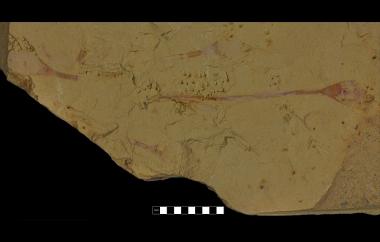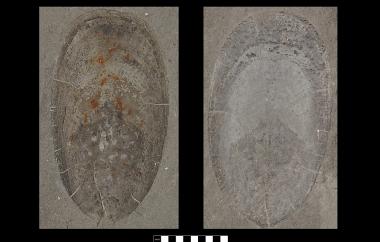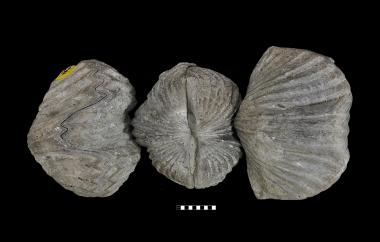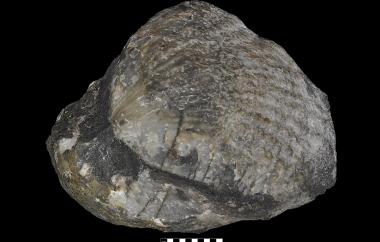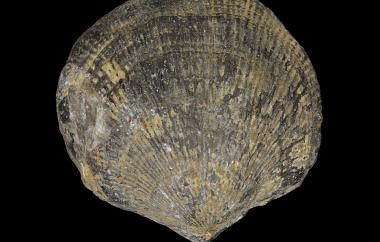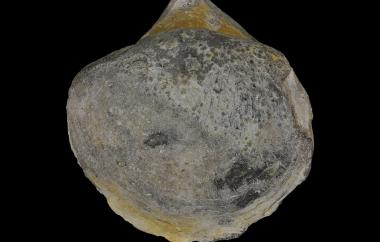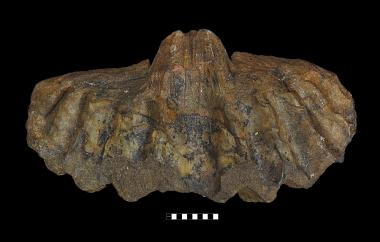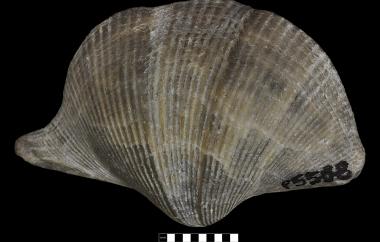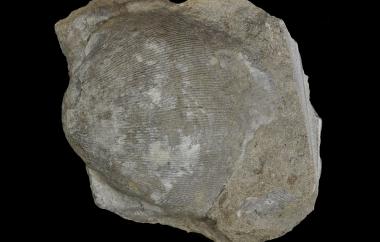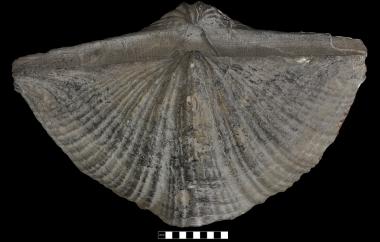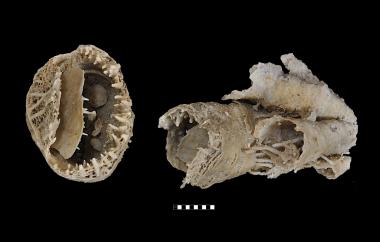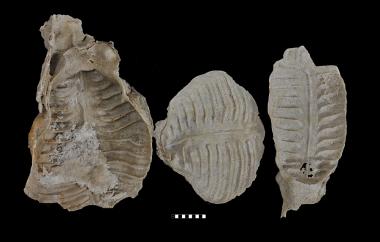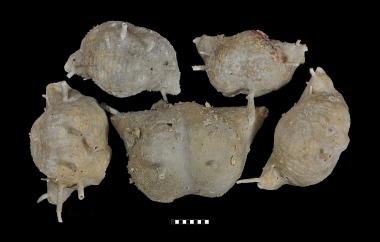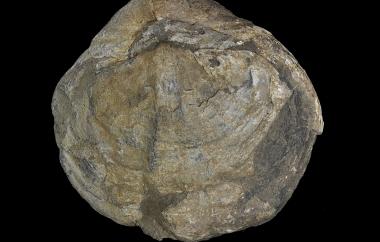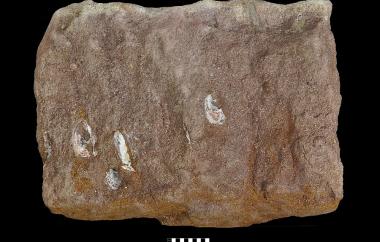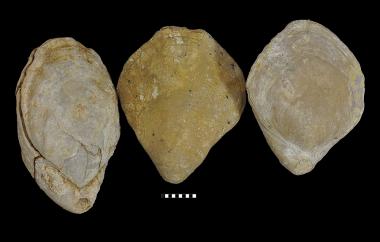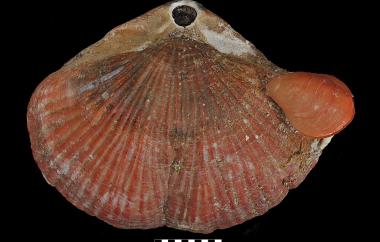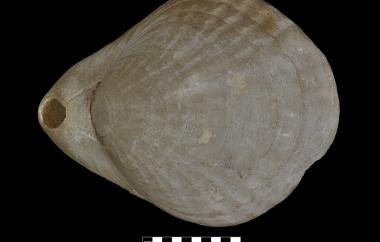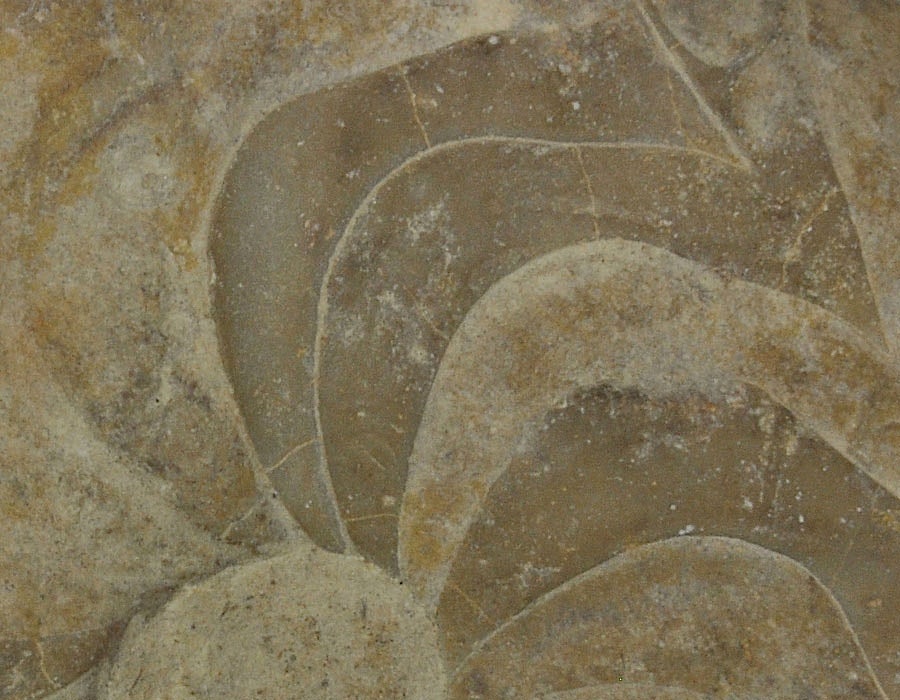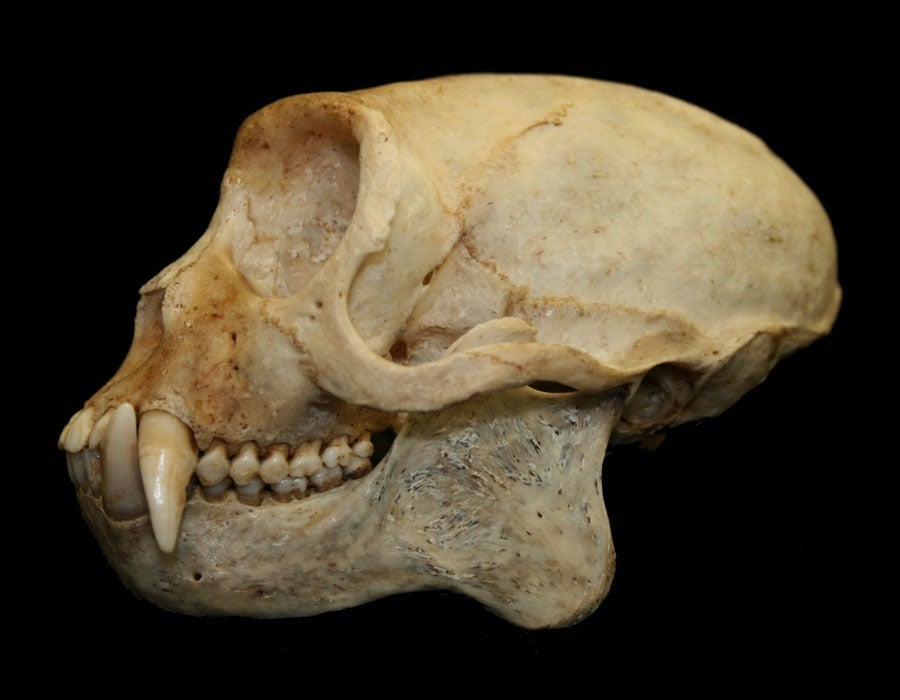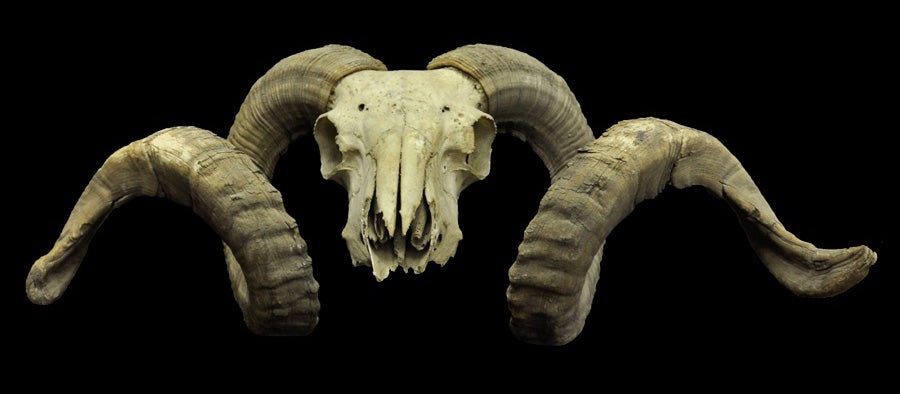The most common seashells at the beach today are bivalves: clams, oysters, scallops, and mussels. However, from the Cambrian to the Permian (542 to 252 million years ago), another group of organisms called brachiopods dominated the world's oceans. Over 12,000 fossil species of these hinge-valved organisms have been described, but only 330 species remain alive today.
Bivalves and brachiopods are both sessile filter feeders, sitting on the seafloor and filtering water for food and oxygen. Their abundance reversed at the end of the Permian, when the greatest of all known mass extinctions eliminated more than 95 percent of Earth’s ocean species. The Permian extinction involved a crisis of low oxygen in the atmosphere that favored the more muscular and actively respiring mollusks over the passively respiring brachiopods. Clams and their relatives are much more efficient at extracting oxygen from seawater, so they were more successful after the extinction.
Unlike bivalves, brachiopods are symmetrical along the midline of the shell, which inspired the Chinese name "stone butterflies." Their beauty and variety is illustrated by this selection donated to the museum by paleontology collections director Greg Retallack.
Images © Museum of Natural and Cultural History.
Lingulid original shell with preservation of soft pedicle, Lingulella chenjiangensis, Maotianshan Hill, China, Yuanshan Shale, Early Cambrian (Toyonian) - Specimen #P12967
Lingulid part and counterpart, Anomaloglossa porca, Mandurama, New South Wales, Malongulli Formation, Late Ordovician (Sandbian) - Specimen #P9199A-B
Original shell orthid, Platystrophia ponderosa, Carollton, Kentucky, Drakes Formation, Late Ordovician (Katian) - Specimen #P6469A-D
Original shell pentamerid, Kirkidium knighti, Cave Creek, New South Wales, Pocket Beds, Late Silurian (Ludlovian) - Specimen #P2887A
Original shell atrypid, Desquamatia zonata, Yiliang, China, Nagpenji Formation, Middle Devonian (Givetian) - Specimen #P13038
Original thick shelled pentamerid, Stringocephalus burtini, Yiliang, China, Nagpenji Formation, Middle Devonian (Givetian) - Specimen #P13037
Internal mold of spiriferid, Australospirifer ceres, Gydo Pass, South Africa, Voorstehoek Shale, Middle Devonian (Givetian) - Specimen #C14661
Pyritized spiriferid, Paraspirifer brownockeri, Sylvania, Ohio, Silica Shale, Middle Devonian (Givetian) - Specimen #P14846
Internal mold of spiriferid, Mucrospirifer mucronatus, Alfred Station, New York, Alfred Shale, Late Devonian (Famennian) - Specimen #P12771A
Original shell spiriferid, Cyrtospirifer thalattodoxa, Pine Creek, Nunavut, Imperial Formation, Late Devonian (Famennian) - Specimen #P5588
Original shell productid, Dictyoclostus portlockianus, Edwardsville, Kansas, Plattsburg Limestone, Pennsylvanian (Missourian) - Specimen #P11167A
Original shell spiriferid, Neospirifer dunbari, Stacer, Indiana, Shellburn Formation, Pennsylvanian (Desmoinesian) - Specimen #P8358
Prorichthofenid or coral-like brachiopod silicified, Cyclantharia kingorum, Glass Mountains, Texas, Word Formation, Middle Permian (Wordian) - Specimen #P8605
Leptodid or oysterlike brachiopod silicified, Collemataria elongata, Glass Mountains, Texas, Word Formation, Middle Permian (Wordian) - Specimen #P8607
Productid silicified, Paucispinifera auriculata, Glass Mountains, Texas, Word Formation, Middle Permian (Wordian) - Specimen #P8610
Original shell of thick shelled spiriferid, Johndearia isbelli, Gerroa, New South Wales, Westley Park Sandstone, Middle Permian (Capitanian) - Specimen #P12183
Original shell of lingulid, Lingula sp., Articulated and in growth position at end of short burrows. Hangvillier, France, Gres a Meul, Early Triassic (Spathian) - Specimen #P6413
Original shell terbratulid, Magellania grandis, Qualco, South Australia, Cadell Marl, Middle Miocene (Langhian) - Specimen #P12993A-C
Two living terebratulids, Magasella sanguinaria, attached smaller Waltonia inconspicua. Stewart Island, New Zealand - Specimen #C31

